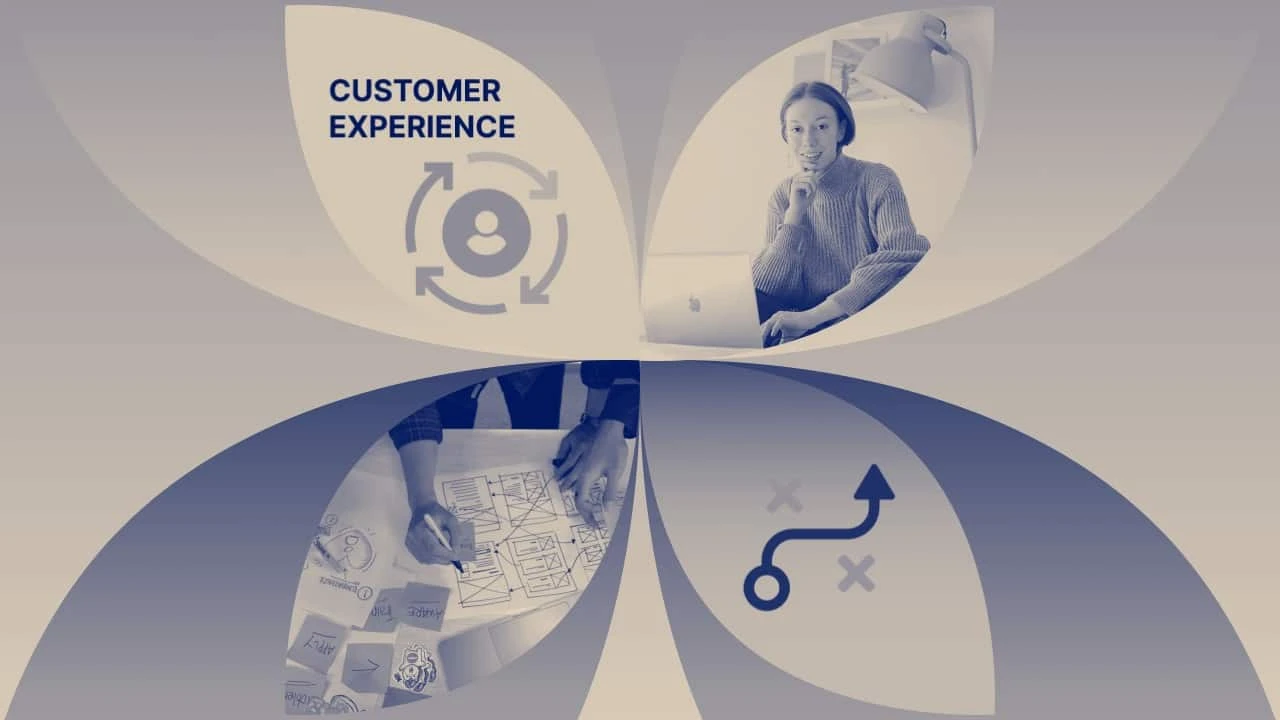The definition of a ‘good customer experience’ today is nowhere as simple or straightforward as it was just a few decades ago (when assessing customer sentiment was carried out through a few phone surveys for example). The modern consumer is multifaceted and complex, reacting to a wide range of factors: economic, social, political, and beyond, and they are more demanding than ever before.
Now, most companies like to believe that they’re evolving alongside their consumers, and are providing innovative and differentiated experiences, but data disproves this notion. According to Bain & Co, 80% of brands are confident they’re delivering a great customer experience. But only 8% of customers agree.
While this disparity is shocking, it also represents a great opportunity for companies to capitalize on it. If businesses want to differentiate themselves from their competition, let alone survive, there’s no better time than now to rethink traditional CX strategies and redefine your approach to delivering on modern customer expectations, than right now.
Keep reading to learn how to do this.
Latest Consumer Insights
Before we plot down ways to improve your organization’s customer experience, let’s look at a few consumer insights to keep in mind when planning your 2023 CX initiatives.
Why customers are changing rapidly
Accenture’s survey reveals that 95% of C-level executives believe that customers are changing faster than their businesses can keep up with. They think that their efforts in digital transformation are just keeping them afloat rather than driving their growth.
So, what exactly drives these consumers to change? Here are some factors that are causing rapid changes in consumer behavior:
#1: Looming inflation and unpredictable markets
72% of consumers state that external factors like inflation are impacting them now more than before. Meanwhile, Gartner’s research reveals that more than half of consumers feel like they have less disposable income and savings this year.
Thus, their spending behavior has not only changed in such a way that they purchased less but in finding ways to make smarter purchases. For example, half of the millennials and Gen Z are using digital tools to track coupons/discounts as a means to combat inflation.
#2: The hybrid lifestyle
COVID-19 has opened doors for digital transformation. With a lot more products and services available online, people have adapted to the hybrid lifestyle of making purchases both online and in-person. According to Prosper Insights & Analytics, 33% of adults are shopping in stores less.
#3: Social & environmental responsibility
A Harris poll revealed that more than two-thirds of Americans are now more concerned about climate change and that they expect their peers to adjust their purchasing habits accordingly. This is supported by the aforementioned Accenture research, which indicated that 72% of consumers are more impacted now by external forces – climate change being one of them.
This leads us to our second insight into company ethics.
Company ethics influences buying decisions
CX Network reported that customer experience practitioners observed a higher level of sustainability awareness from consumers. A lot of customers now consider companies’ level of environmental sustainability and morals in their purchasing decisions. An Aflac research supports this by showing almost 8 out of 10 of consumers believe companies that stay true to their ethics/values outperform others in their field.
Meanwhile, 92% of millennials are more likely to buy products from ethical companies, and over four-fifths of these consumers believe ethical brands outperform similar companies that lack a commitment to ethical principles. Thus, they want organizations they engage with to not only answer their needs but also add value to the world overall.

Balenciaga’s controversial ad campaign features children with teddy bear purses in bondage wear.
The recent Balenciaga mishap is proof of these statistics. Balenciaga received so much backlash from both its customers and brand ambassadors due to their highly-controversial and inappropriate campaign, featuring children holding teddy bears purses wearing bondage-inspired apparel/accessories.
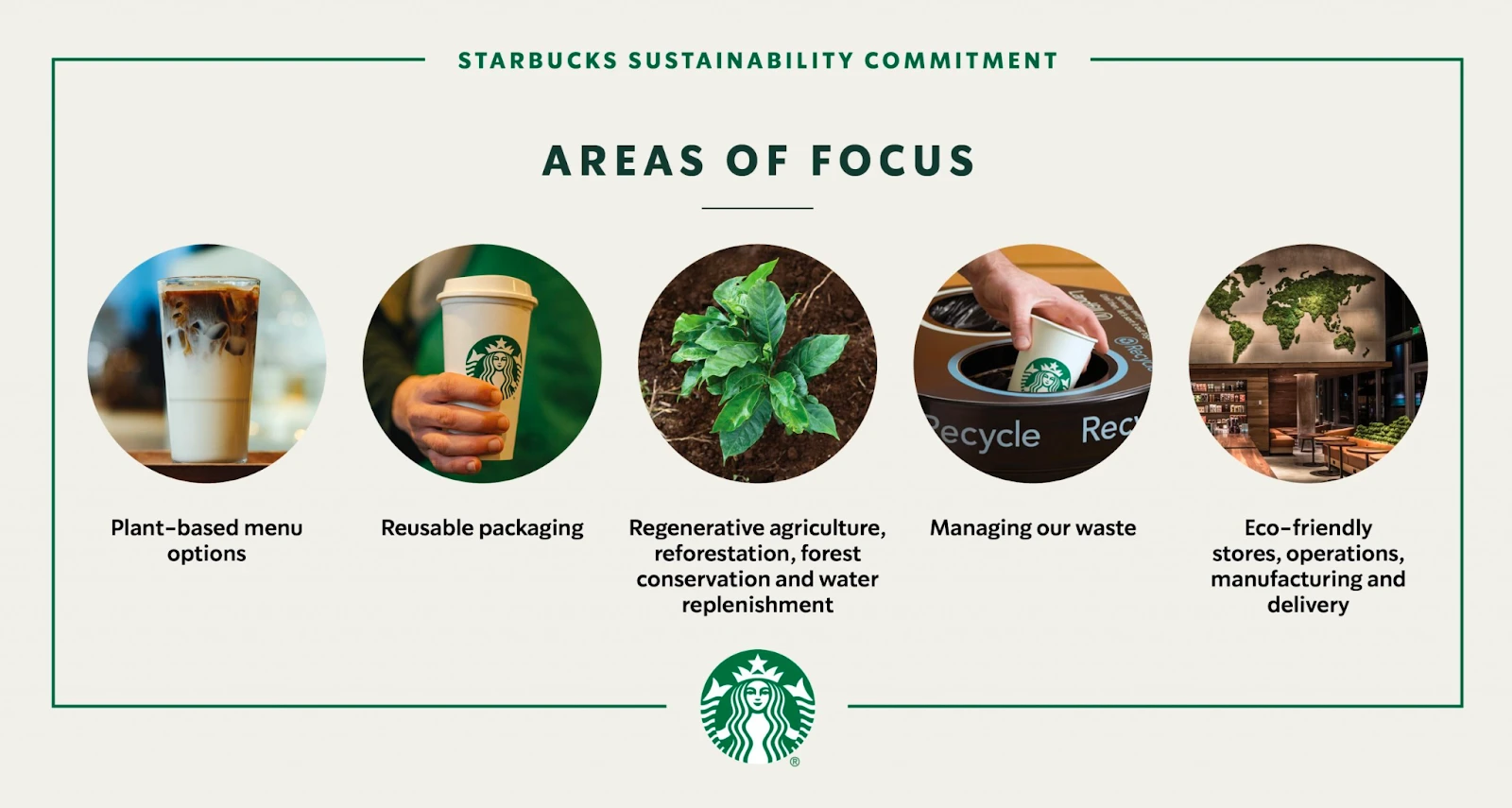
Starbucks’s sustainability commitment focuses on these five key areas.
On the other hand, Starbucks has often been commended for its environmental sustainability efforts, such as using reusable packaging, expanding its plant-based menu, and investing in forest conservation. The organization recently reported an increase in total net revenues in the last quarter of 2022 and remains one of the top players in the F&B industry.
Customers are looking for more meaningful interactions across multiple channels
A Conduent report revealed that customers crave more meaningful interactions with brands. 8 out of 10 respondents would likely purchase products from the same brand if they had a great customer experience on a digital channel.
Here are factors that contribute to a meaningful customer experience:
#1: Personalization
“Personalization” has been a marketing buzzword for a reason. A Gartner study pointed out that 86% of B2B and 72% of B2C consumers expect companies to know their information during an interaction.
Thus, it’s imperative to integrate mass data available for optimal personalization. Some organizations fail to analyze all data sources and mostly rely on customer feedback.
However, strategies for optimization and personalization should be taken from integrated sources of demographics, operational data, financial data, purchase history, and more, to truly understand the multi-dimensional needs of consumers. This also enables an organization’s customer experience to evolve and keep up with consumer changes.
#2: Convenience
Gartner’s research discovered that consumers’ value for convenience is at an all-time high over the past 12 years.
Moreover, a Hyken ACA research shows that:
-
Three-fourths of customers would pay more for a convenient experience and would switch companies if they found out a competitor provided more convenience.
-
68% would return to a brand if the customer experience was convenient.
-
80% would likely recommend a brand or product if it provides a convenient customer experience.
The banking industry poses a good example of both adding a customer-centric integration design and adhering to convenience. In the recent decade, the banks immensely transformed with the current CX trends – opening a bank account used to take a painstaking process in-person, and now you can do so online within seconds.
There are many good examples of banks that do this exceptionally well, but JPMorgan Chase is one of the best at it. In recent years, they have implemented the following:
-
A mobile app that can open accounts, pay bills, set travel notifications for cards, and publish daily highlights of the consumer’s transactions with visuals.
-
24/7 customer support via telephone or mobile app.
-
Live events called “Chase Chats” explore personal finance topics.
#3: Omnichannel
A McKinsey study revealed that organizations intend to increase digital engagement by 1.5x in 2024, and one of the top areas for investment is improving omnichannel via tech. Omnichannel is seen to make businesses more agile. In fact, several surveys reported that consumers already expect an omnichannel experience; it’s no longer an edge over the competition, but a must-have for organizations.
However, a unified omnichannel experience is something you can have an edge over your competitors. As consumers are approaching organizations across all touchpoints, companies should ensure that all channels provide a cohesive messaging and seamless experience.
Let’s take a look at Sephora. The renowned beauty brand blends online and offline experiences smoothly. The brand experience in every brick-and-mortar store is consistent, providing old and new customers with free makeovers, countless product testing, beauty tips, and well-informed salespeople.
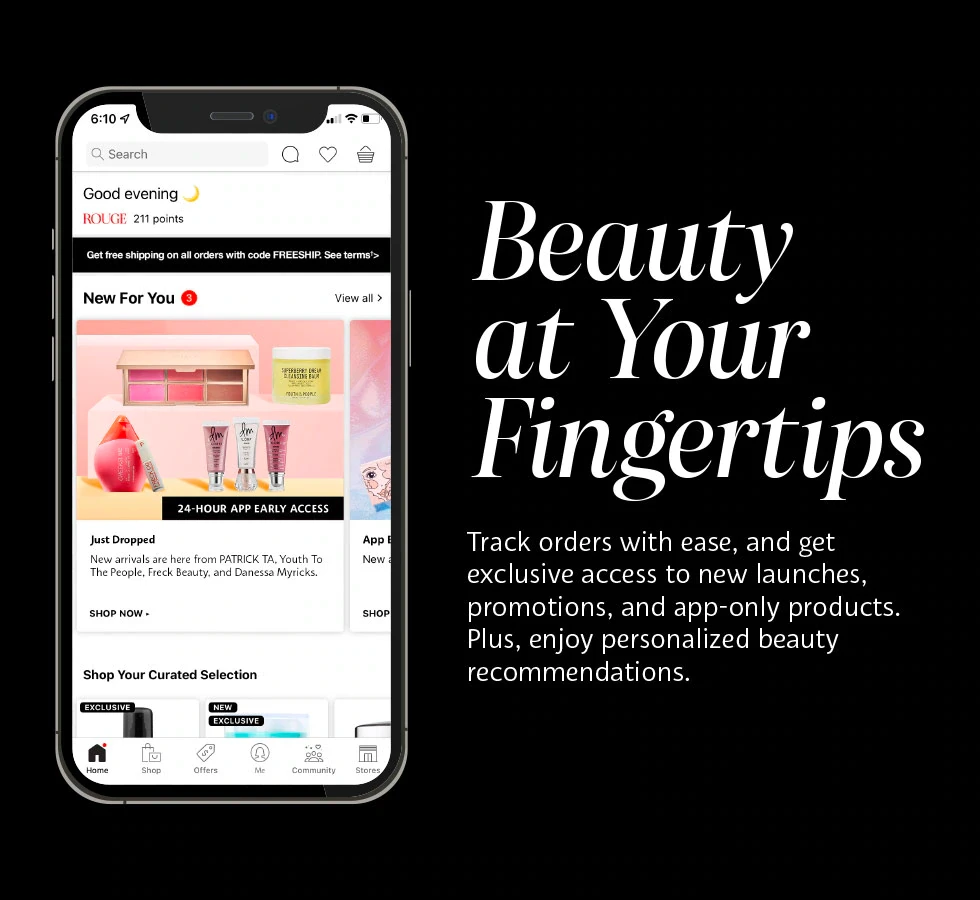
Sephora’s mobile app ad.
Meanwhile, their mobile orders increased twice as much because of a good digital experience unified with in-store. Customers can use their Beauty Bag to view previous purchases, scan items in-store, watch tutorials, and much more. Thus, it gives its customers a seamless, unified omnichannel experience.
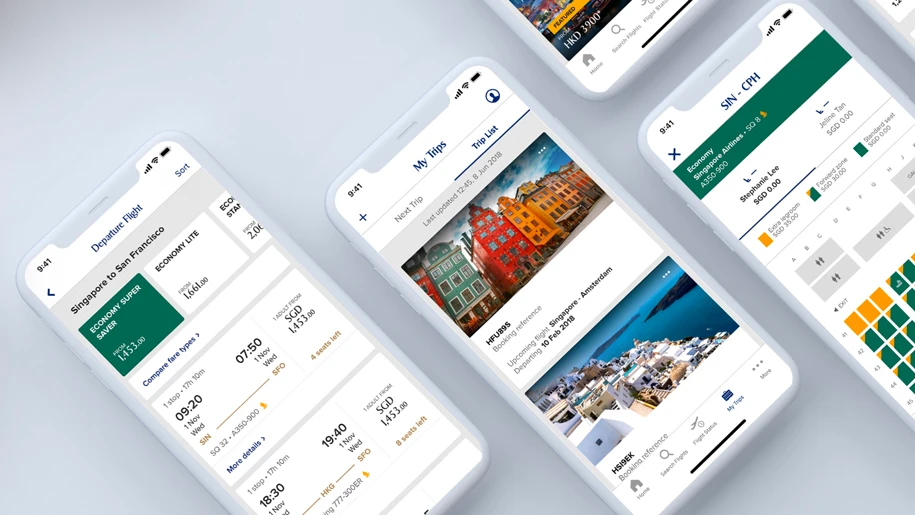
Snapshots of Singapore Airlines’ mobile app.
Singapore Airlines is another good example of providing a unified omnichannel experience. In partnership with AOE-integrated airports and shopping malls, it merges online and offline experiences by enabling customers to easily shop, pre-book, and enhance in-flight options and earn loyalty points.
How Can Organizations Improve Customer Experience in 2023?
AI augmentation
Harvard Business Review discovered that a combined effort from employees and artificial intelligence (AI) enables companies to achieve significant improvements. Likewise, Gartner states that AI augmentation enables organizations to make smarter data-driven decisions. They predict that by 2025, organizations will shift 75% of their operational work from production to more strategic activities if they use AI across marketing functions.
Using AI to optimize content and journey mapping leads to better segmentation and personalization. Customer data retrieved from AI can be used to drive more agile responses.
Gartner lists down the main impact of AI augmentation:
-
Applications of AI (i.e. automation, chatbots) are set to improve KPIs of timeliness, quality, and consistency.
-
Machine learning and analytics can transform metrics into operational success.
-
AI management requires greater focus to upskill and empower existing talent and end-to-end consideration of diversity, equity, and inclusion.
And opportunities found from AI augmentation:
-
Focus on responsible AI that accounts for business and societal value: 77% think that organizations are accountable for misuse of AI. How organizations can build trust and scale with AI is to empowering employees and businesses while serving customer needs. A good example of this is the aforementioned digital tools that offer discounts/coupons as added benefits for loyal customers.
-
Create a fusion team of marketing, data, and IT to collaborate on the technology stack: These teams have the opportunity to create more effective and empathetic customer segments that can adapt to consumer behavioral changes through tools, analytics, ethnography, trend forecasting, and research. Thus, they have an opportunity to discover growth opportunities and create a personalized experience.
-
Resources can shift focus on data insights:Data analytics can ease the growing volumes of customer inquiries and problems paired with the scarcity of customer care. Brands can optimize customer experience by using these to measure performance and improve operational efficiency. With the help of AI tools that provide predictive analytics, brands may resolve pain points before customers encounter them, resulting in a smoother customer journey.
Upskill your team in specific areas
Investing in your team’s skills to drive better customer experience results is a no-brainer – Forbes’ research indicates that high-growth companies focus on upskilling their employees.
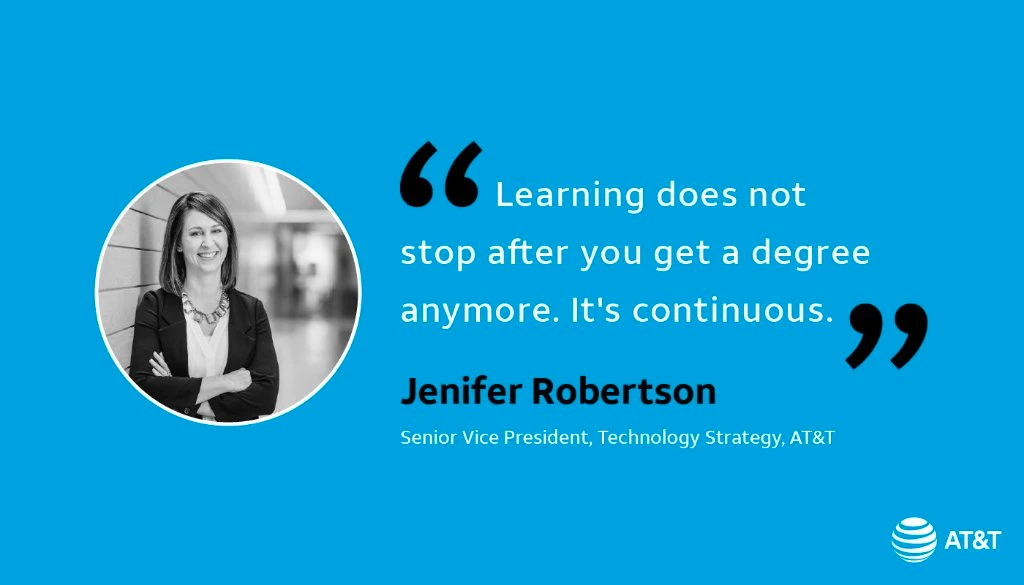
AT&T SVP Robertson’s thoughts on upskilling.
For instance, AT&T invested about $1 billion in retraining nearly half its workforce to keep the business competitive, as it moved from voice networks, hardware, and landline to data network, cloud, and mobile-first.
Senior Executive Vice President of Human Resources Bill Blase tells CNBC that the company had two choices: “We could go out and try to hire all these […] people and probably pay through the nose to get them, but even that wouldn’t have been adequate. Or we could try to reskill our existing workforce so they could be competent in the technology and the skills required to run the business going forward.”
It seems that their wise choice of the latter is paying off as the company recently reported that their wireless services revenues were up by 5.6% and broadband revenues by 6.1%.
That said, certain areas must be given more attention in the upcoming year to keep up with global headwinds. Teams must be trained to do the following:
#1: Develop multidimensional customer personas:
Accenture’s playbook advises us to start seeing customers as “multidimensional through dynamic data” instead of “buyers with a static persona”. In fact, this may lead organizations to:
-
16% be more likely to achieve the highest levels of profitability growth
-
19% be more likely to achieve the highest levels of employee retention
Meanwhile, Gartner mentions that only 36% of global CX practitioners believe that their customer persona development is immature as it hasn’t been updated for more than three or so years.
Therefore, there’s a dire need for teams to develop complex personas using an integration of key data points such as mobile behavior, preferences, purchasing factors, and sources of satisfaction. It’s an iterative process that takes time, training, and experience.
#2: End-to-end journey mapping that drives loyalty & advocacies:
Organizations know that developing an end-to-end journey map does improve their cross-functions and customer experience. However, what some fail to realize is that it’s not a one-off process. Customer journey constantly evolves as consumers’ priorities evolve. So, much like persona development, it is an iterative process that takes time and training in order to achieve customer retention.
#3: Manage AI:
Managing AI tools and new technologies require the involvement of various teams – data intelligence, marketing, and IT – and it’s essential for these teams to know how to handle tools responsibly and effectively. Which touchpoints should they place an AI tool? Which part of the customer experience will require a human touch? Both human design and AI should be amalgamated for an optimal experience, and it takes the right knowledge and skill to find the perfect balance.
#4: Data analytics on a hybrid of sources (customer feedback & behavioral data):
Thanks to AI, organizations can attain information about their customers on a much deeper level instead of just relying on surveys. However, the availability of big data entails data segmentation, interpretation, analysis, and such. A highly-skilled team would be able to engineer and interpret big data enough to make smarter, informed decisions.
Use a quality framework for customer experience development
Customer Gauge reveals that only 20% of companies know how customer experience programs add to business growth, and fewer are actively driving revenue income. That said, a high-quality framework is imperative for operations to mature and focus on customer satisfaction. A good framework helps organizations make decisions whenever they are at a crossroads.
Nielsen Norman Group provides a high-level framework for organizations to transform and operationalize customer experience at scale. This framework indicates four key areas in which organizational transformation must take place:
-
Company vision & strategy: Leadership committed to a long-term customer-centric strategy.
-
Employees: There must be an established structure that encourages collaboration across teams and departments.
-
Operations: Innovative processes to encourage cross-function collaboration toward the shared vision of journey-centric experience design.
-
Technology: Tech that supports these collaborations and journey-centric customer experience management.
Thus, it’s highly recommended for your framework’s building blocks to consider these key areas for improved customer experience.
Immerse all levels of your organization in customer experience
Organizations with the best customer experience involve everyone’s participation, especially the leadership. Being customer-centric requires employees to know who their customers are, customers’ perceptions of their interactions, and each one’s role in contributing to the overall customer experience. It simply bridges the gap between customer expectations and internal capabilities.
Here are a few ideas on how to immerse employees in customer experience:
-
CX rooms: Forrester mentions customer experience rooms as “immersive, interactive spaces that help employees better understand customers”. It’s a new tool that brings customer journeys and customer service experience to employees, which can encourage a deeper understanding among employees of customer-centricity.
-
Ask employees to go through every touchpoint of the customer journey: Require every employee to browse content, make a transaction, and interact with customer care. This gives them first-hand experience of your organization’s journey map, in which their feedback would be highly useful. They may be able to identify gaps in certain touchpoints the customer experience team failed to see.
-
Apply a top-down approach: Involve leadership in modeling the organization’s customer-centric framework. This way, you can tie in your customer experience goals with the overall business strategy. Leaders should set an example for the rest to have a customer-centric mindset for the entire organization.
Implement customer loyalty programs
Annex Cloud reveals that customer loyalty programs boost revenue by 5-10% and increase purchase rates by 10% on average. Therefore, it’s a good idea to give your loyal customers more incentives – while possibly converting occasional customers into loyal ones.
To develop an optimal loyalty program, it’s essential to identify your regular customers by:
-
Analyzing their annual purchases
-
Determining how frequently they shop/buy
-
Assessing customer satisfaction
-
Which products/services they value most
Businesses are starting to expand loyalty rewards to integrate customer engagement, such as referral rewards or rewards for user-generated content while providing them with a more personalized experience.
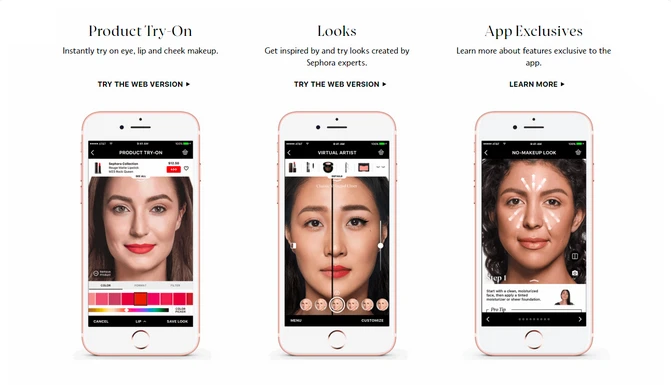
A snapshot of Sephora’s in-app loyalty program.
Again, Sephora hits this on the nail with their “Beauty Insider” program which offers customers one point per $1 spent. These points add up to lavish rewards and discounts. Moreover, the program also provides customers with products to try on via a virtual assistant, enabling them to find the right product for their skin type.
This sort of personalized experience makes the customers feel part of your organization’s community, and so they will be more than willing to keep purchasing and even recommend your products/services to others.
